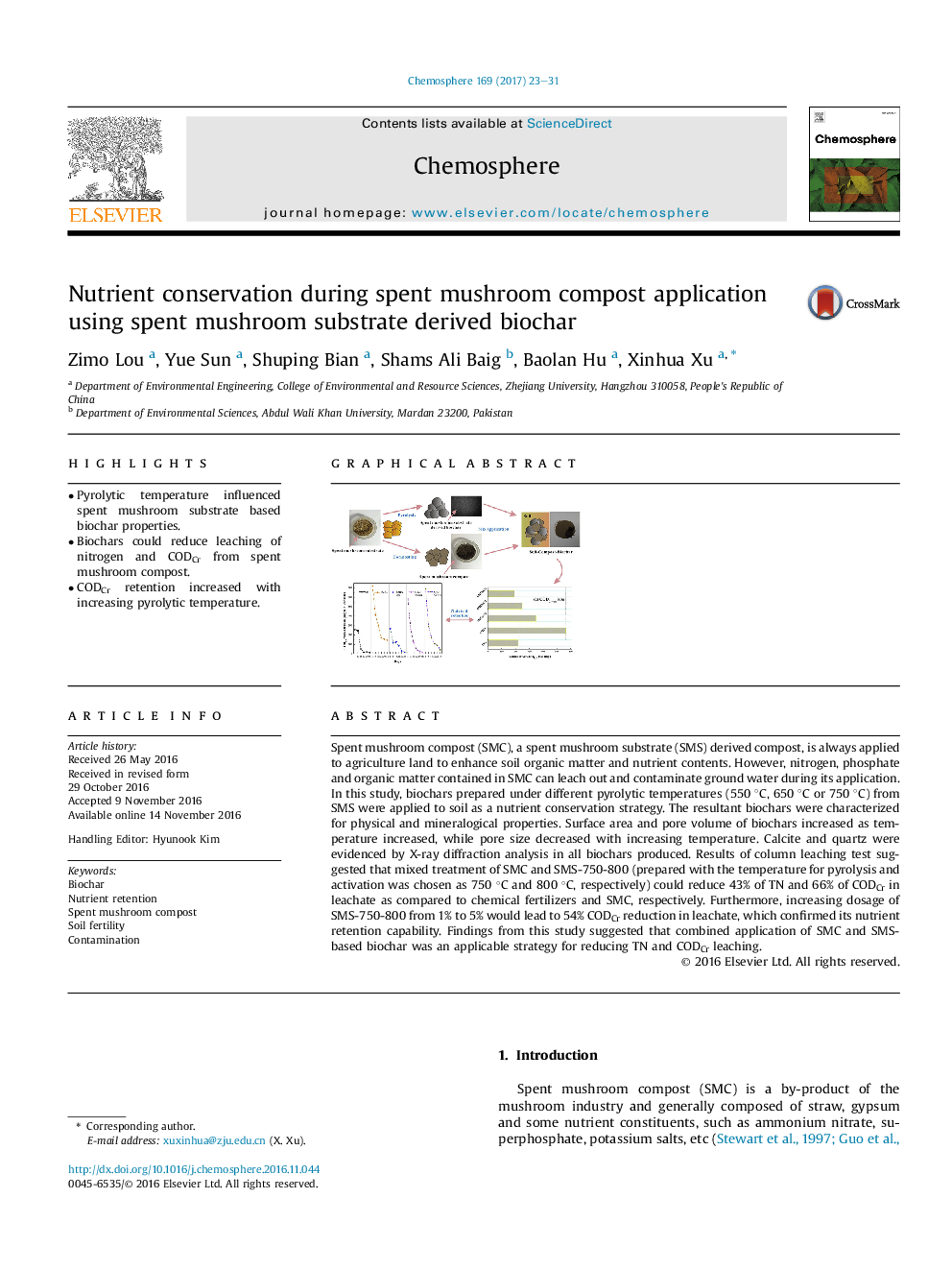| Article ID | Journal | Published Year | Pages | File Type |
|---|---|---|---|---|
| 5746973 | Chemosphere | 2017 | 9 Pages |
â¢Pyrolytic temperature influenced spent mushroom substrate based biochar properties.â¢Biochars could reduce leaching of nitrogen and CODCr from spent mushroom compost.â¢CODCr retention increased with increasing pyrolytic temperature.
Spent mushroom compost (SMC), a spent mushroom substrate (SMS) derived compost, is always applied to agriculture land to enhance soil organic matter and nutrient contents. However, nitrogen, phosphate and organic matter contained in SMC can leach out and contaminate ground water during its application. In this study, biochars prepared under different pyrolytic temperatures (550 °C, 650 °C or 750 °C) from SMS were applied to soil as a nutrient conservation strategy. The resultant biochars were characterized for physical and mineralogical properties. Surface area and pore volume of biochars increased as temperature increased, while pore size decreased with increasing temperature. Calcite and quartz were evidenced by X-ray diffraction analysis in all biochars produced. Results of column leaching test suggested that mixed treatment of SMC and SMS-750-800 (prepared with the temperature for pyrolysis and activation was chosen as 750 °C and 800 °C, respectively) could reduce 43% of TN and 66% of CODCr in leachate as compared to chemical fertilizers and SMC, respectively. Furthermore, increasing dosage of SMS-750-800 from 1% to 5% would lead to 54% CODCr reduction in leachate, which confirmed its nutrient retention capability. Findings from this study suggested that combined application of SMC and SMS-based biochar was an applicable strategy for reducing TN and CODCr leaching.
Graphical abstractDownload high-res image (221KB)Download full-size image
